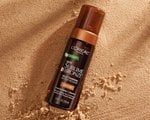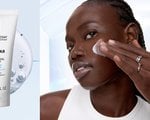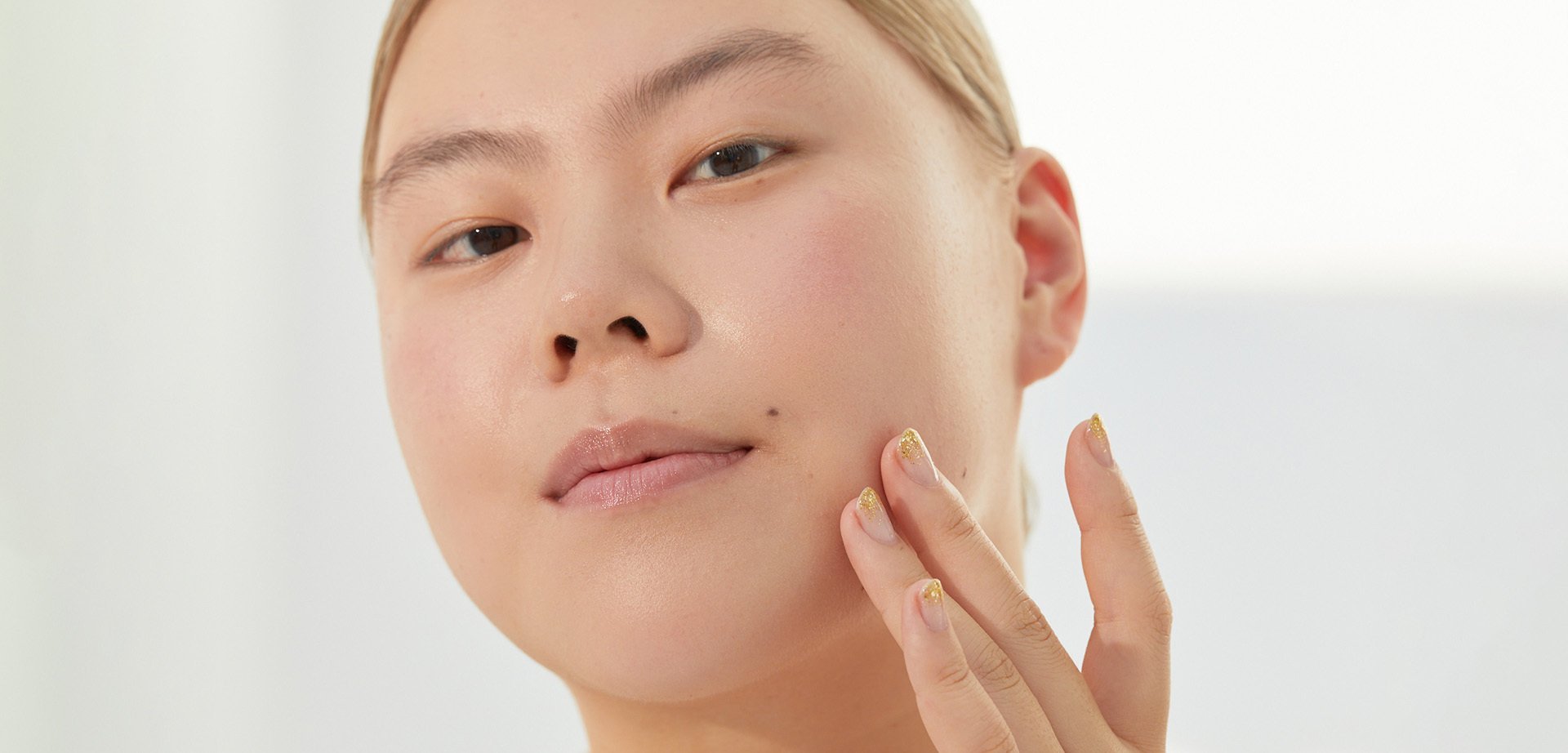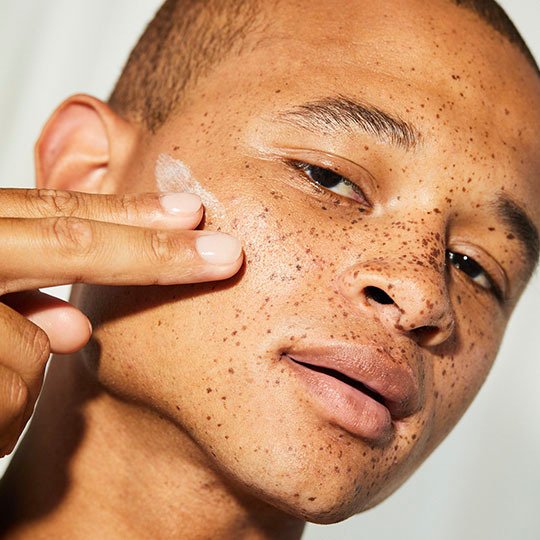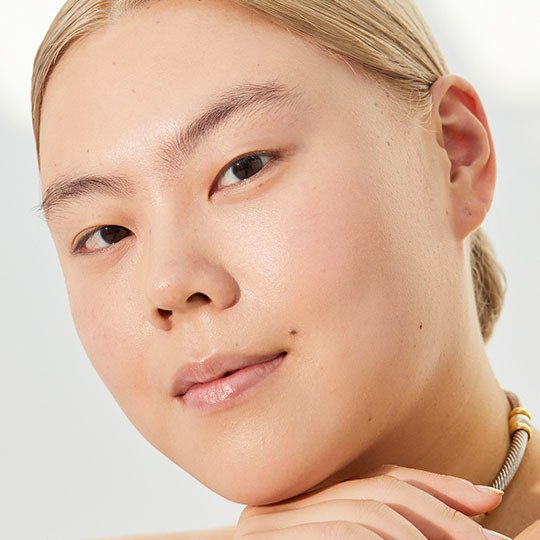How To Determine Your Skin Tone and Undertone
December 04, 2024
Skin Tone vs. Skin Undertone
Your skin tone is a measure of how light or dark your skin appears—in other words, how much pigment you have in your skin. It ranges from fair to deep and can fluctuate throughout the year (for example, if you’re sporting a tan). Skin undertones, on the other hand, refer to the underlying tint of your skin. It doesn’t affect your overall skin color but does impact the overall temperature of your complexion. And unlike skin tones, skin undertones never change—they’re totally fixed. If you’re wondering “What is my skin tone and undertone?” keep reading. We’ll explain how to identify each, ahead.
Types of skin tones
Typically, skin tones are categorized as either fair, medium, or deep.
- Fair is the lightest skin tone—on makeup products, it may also be referred to as “ivory,” “alabaster,” or “porcelain.” Those with fair skin typically burn rather than tan and oftentimes have light hair and eyes.
- Medium skin is, unsurprisingly, neither noticeably pale nor deep in tone. This skin tone is often described as looking naturally tan or sun-kissed. (Olive skin also falls into this category.)
- Deep skin is the darkest skin tone. On makeup, look for labels like “chocolate,” “espresso,” or “ebony,” as those will provide the closest shade match. If you have deep skin, you likely also have dark hair and eyes, though there are, of course, exceptions to the rule.
Types of skin undertones
Undertones refer to the overall hue or temperature of your skin. Typically, skin undertones can be broken up into three categories: cool, warm, and neutral.
- Cool undertones have a pinkish or bluish cast (though how noticeable this is may depend on your skin tone).
- Warm undertones have a more golden, sun-kissed tint. Your skin may appear naturally bronzed or peachy in some lighting, and you likely tan easily.
- Neutral undertones are neither cool nor warm, but fall somewhere in the middle.

How To Figure Out Your Skin Tone
If you’re wondering how to find your skin tone, good news: It’s very simple. With a mirror on hand, you should be able to sleuth out your skin tone pretty easily. Stand in front of a window to get some natural lighting, then look at your complexion and assess how light or dark it is.
Pro tip: When attempting to determine your skin tone, don’t look at the center of your face. This area naturally gets a lot of sunlight and may be darker than the rest of your face. Instead, look at your jawline—the skin here is typically impacted the least by skin color changes due to sun exposure.

How To Find Your Undertone
Determining your skin undertone requires a bit more than simply eyeballing your skin, but it doesn’t have to be overly complicated. Try the following eight tricks to help find your undertone:
1. Look at the veins on the inside of your wrist
If you ask a pro how to determine what undertone your skin has, chances are high they’ll suggest this approach. Position yourself somewhere in natural lighting, then flip over your arm and look at the color of the veins on the inside of your wrist. If they appear blue or purple, you likely have a cool skin tone. Greenish veins, on the other hand, suggest warmer yellow or golden undertones. If you can’t really suss out which color your veins appear (or if you see a mixture of blue and green tones), you may have neutral undertones.
2. Put white paper next to your face
Place a piece of plain white paper next to your face (again, natural lighting works best), and take a look in the mirror. The paper should create a cast across your face that can help you identify your skin undertone. If the cast appears pinkish, you likely lean cooler. If it looks yellow, you’re probably warm-toned.
3. Look behind your ear
It goes without saying that you should determine your undertone when your face is makeup-free, but even with a clean complexion, certain skin concerns can mask your true tone. If you’re having trouble discerning whether you have a warm vs. cool undertone, have a friend take a peek behind your ear—the skin there is less likely to be affected by concerns like breakouts or dark spots. If the skin appears yellowish, you’re most likely warm-toned. A pinkish tint suggests a cool undertone.
4. Consider your jewelry preferences
Believe it or not, the jewelry you wear on a daily basis may point to your skin’s undertones. Gold jewelry tends to look best on those with warm undertones, while silver jewelry is more flattering on those with cool undertones. If your jewelry collection heavily leans in one direction, that may be an indication that you already have your skin undertone figured out (subconsciously, anyway).
5. Keep your hair and eye color in mind
Your hair and eye color can play a part in determining your undertone. While it may not always hold true, people with cool undertones typically have gray, blue, green, or deep brown eyes along with an ash brown or blonde hair color. Those with warm undertones, on the other hand, often have hazel, amber, or warm brown eyes and warmer hair colors, such as chestnut brown or golden blonde.
6. Think about how the sun affects you
The way cool-toned skin vs. warm-toned skin responds to sun exposure can be very different. Typically, those with cool skin will burn or freckle after spending time in the sun. Those with warm skin, on the other hand, tend to tan. Keep in mind, however, that both tans and burns are damaging. To protect your skin from sun damage, the American Academy of Dermatology (AAD) recommends wearing a broad-spectrum sunscreen with an SPF of at least 30 every day. Once you identify your skin tone and undertone, you can even opt for a tinted version to streamline your morning routine. We love the La Roche-Posay Anthelios Mineral Tinted Sunscreen for Face with SPF 50. It comes in four shades and blends easily without a white cast or a greasy, heavy feel. If you’d like something with a bit more coverage, you can also try an SPF-infused foundation, like the It Cosmetics CC+ Nude Glow Lightweight Foundation + Glow Serum with SPF 40. The lineup includes 22 buildable medium-coverage shades to complement a range of skin tones and undertones.

7. Take stock of your closest
We tend to gravitate toward colors that look good on us, and that holds true for the clothing we wear. Head on over to your closet and take stock of the colors in your clothing collection—specifically, the neutral shades. If you open your wardrobe and are met with an array of stark blacks and whites, you may be cool-toned. On the other hand, if your basic clothing pieces are mostly brown or off-white, chances are you’re warmer. Of course, this isn’t as failsafe a method as checking your veins, so if you’re wondering how to determine your undertone definitively, we suggest pairing this approach with another method for a more accurate read.
8. Assess which colors complement your complexion
The makeup you choose to wear can also help you narrow down your skin’s undertone. If you typically gravitate toward cooler hues like purples, blues, and silvers, take that as a sign that you may have cool-toned skin. Strongly favoring warmer shades—such as red, brown, and gold—may indicate that you’re on the warmer side. Again, this isn’t a fail-safe approach, so we suggest using this method alongside another to more accurately identify your undertone.
The Importance of Knowing Your Skin Tone and Undertone
Now that you know how to determine your skin tone and undertone, we can explain why it matters. Obviously, having an accurate read on your skin tone and undertone is essential for finding a foundation that matches your skin. But it can also help inform what color lipstick, blush, and eye makeup you wear.
Generally speaking, you’ll want to match like with like. In other words, if you have cool skin, you’ll tend to look best in cool colors, like lilacs, blues, silvers, and taupes. Warmer hues like gold, brown, and red, on the other hand, bring out the underlying golden tint in warm skin. If you’ve gone through the above tests and you don’t seem to be cool or warm, you likely have neutral skin—and pretty much any makeup color will mesh well with your complexion. Just be sure to keep your skin tone in mind, as selecting a color that’s too light could wash you out, while overly-dark hues may appear too stark against your complexion.
The same goes for hair colors. The best hair colors for cool skin tend to be those with ashier undertones. Cool coppers, icy blondes, and fantasy hues like blue or gray can also be flattering against cool skin. Warm skin, on the other hand, pairs well with richer, golden or reddish-toned hair colors, like auburn, chocolate brown, and honey blonde.
At the end of the day, though, your hair and makeup choices are your own—so you should feel free to rock any look you want, even if it doesn’t “go” with your skin. After all, beauty is about letting your individuality shine, not following rules.
Next Up: How Do You Get an Even Skin Tone?
Read more
EXPLORE BY TOPICS AND BRANDS
- expert-advice
- Ask the Expert
- video-embed
- Embedded Video














